There are many types of betta fish, both wild and domestic.
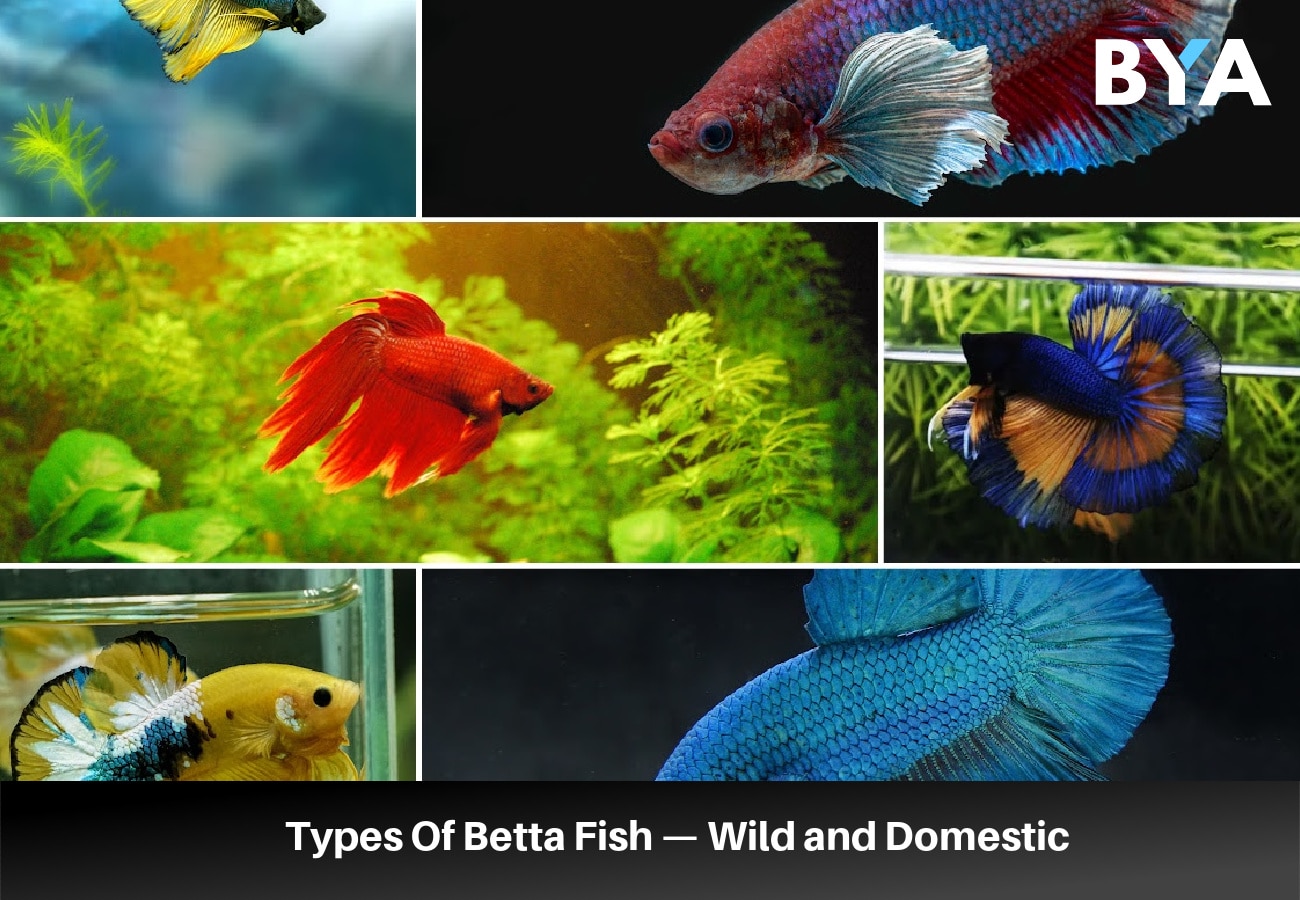
One of the reasons betta fish are popular is the wide selection of tail types and colors. Whether someone wants a betta with a short or long tail, red or blue — there are numerous options.
Betta Splendens — Different Tail Types
Some of the most popular varieties are veiltails, crowntails, and plakats. Hobbyists can even buy wild-type bettas, though they are less common.
How Many Types Of Betta Fish Are There?
There are over 73 species of betta fish.
Betta splendens are the most popular and abundant in the aquarium industry. Almost all types of betta fish in the aquarium industry are Betta splendens.
Though they have the same genetics and ease of care, they look different. There are dozens of different colors, patterns, and tail types.
Rare types of betta fish include purple, light yellow, and albino bettas. The most common types of betta fish are veiltails.
Wild-Type Bettas
Wild bettas are less colorful and have shorter fins than domestic bettas. Their subdued bodies help them blend in with their environment and avoid predation.
Domestic bettas (Betta splendens) come from wild-type bettas through selective breeding.
Wild bettas are for sale in some places, though they are rare. Unfortunately, habitat loss makes most wild betta species vulnerable or endangered.
Wild bettas are far less aggressive than Betta splendens. They are territorial of their homes, which is where they got their reputation.
Domestic bettas were explicitly bred for increased aggression for use in betta fighting.
Several different species of betta fish live in the wild, including:
- Betta albimarginata
- Betta bellica
- Betta brownorum
- Betta imbellis
- Betta mahachaiensis
- Betta smaragdina
- Betta prima
- Betta pugnax
The Biggest Type Of Betta Fish
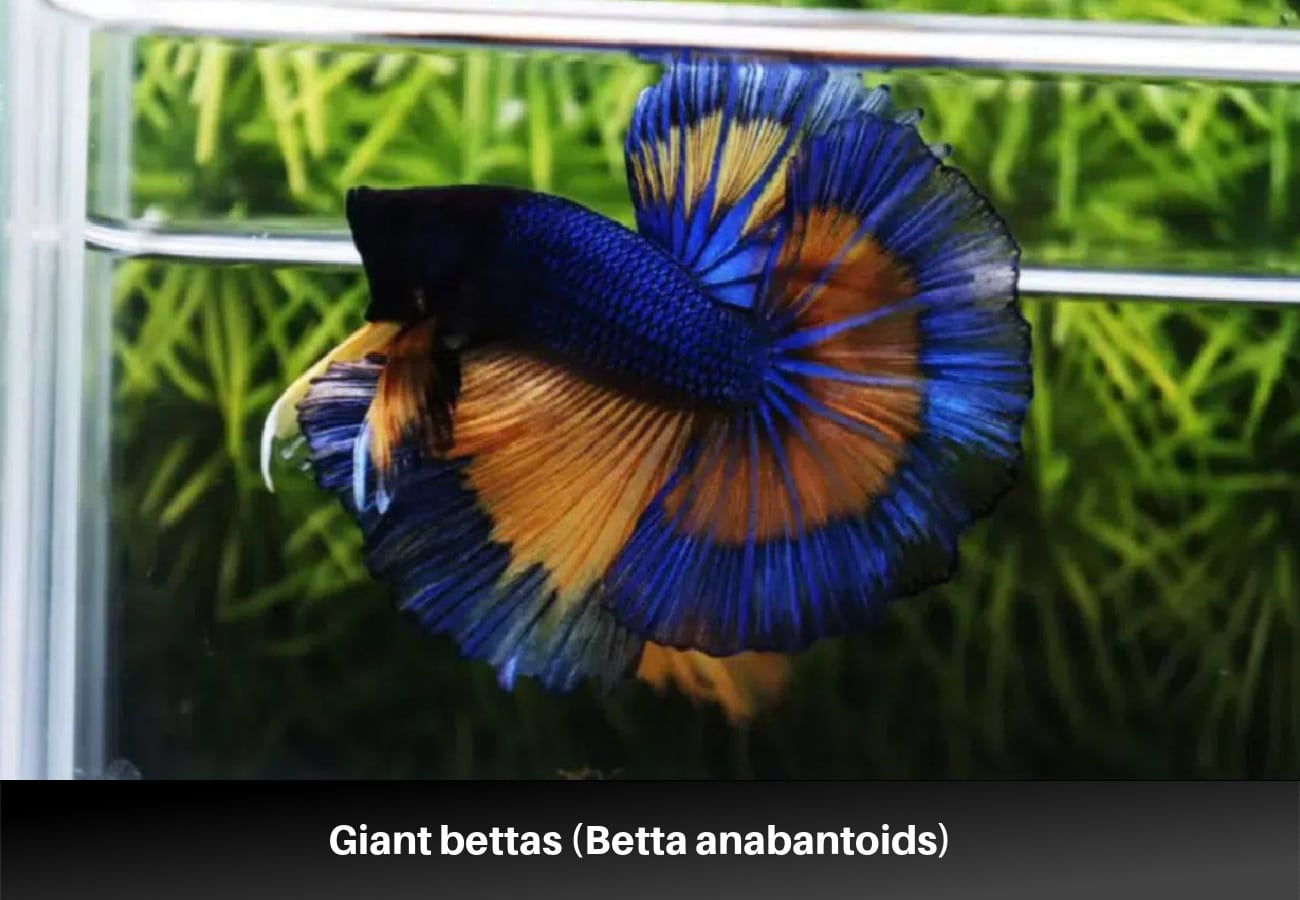
Giant bettas (Betta anabantoids) are the largest betta species in the world. These bettas can grow almost twice the size of a regular betta, about 5-7 in (12.7-17.8 cm).
These fish have shorter fins than most Betta splendens. They have colorful bodies in shades of blue, green, and red.
Giant bettas are a product of selective breeding and are one of the most peaceful species.
Unfortunately, their large size leaves them with a weakened immune system. They can be more challenging to care for since they get sick more easily.
With the proper care, they typically live between three and five years.
The Hardiest Type of Betta Fish
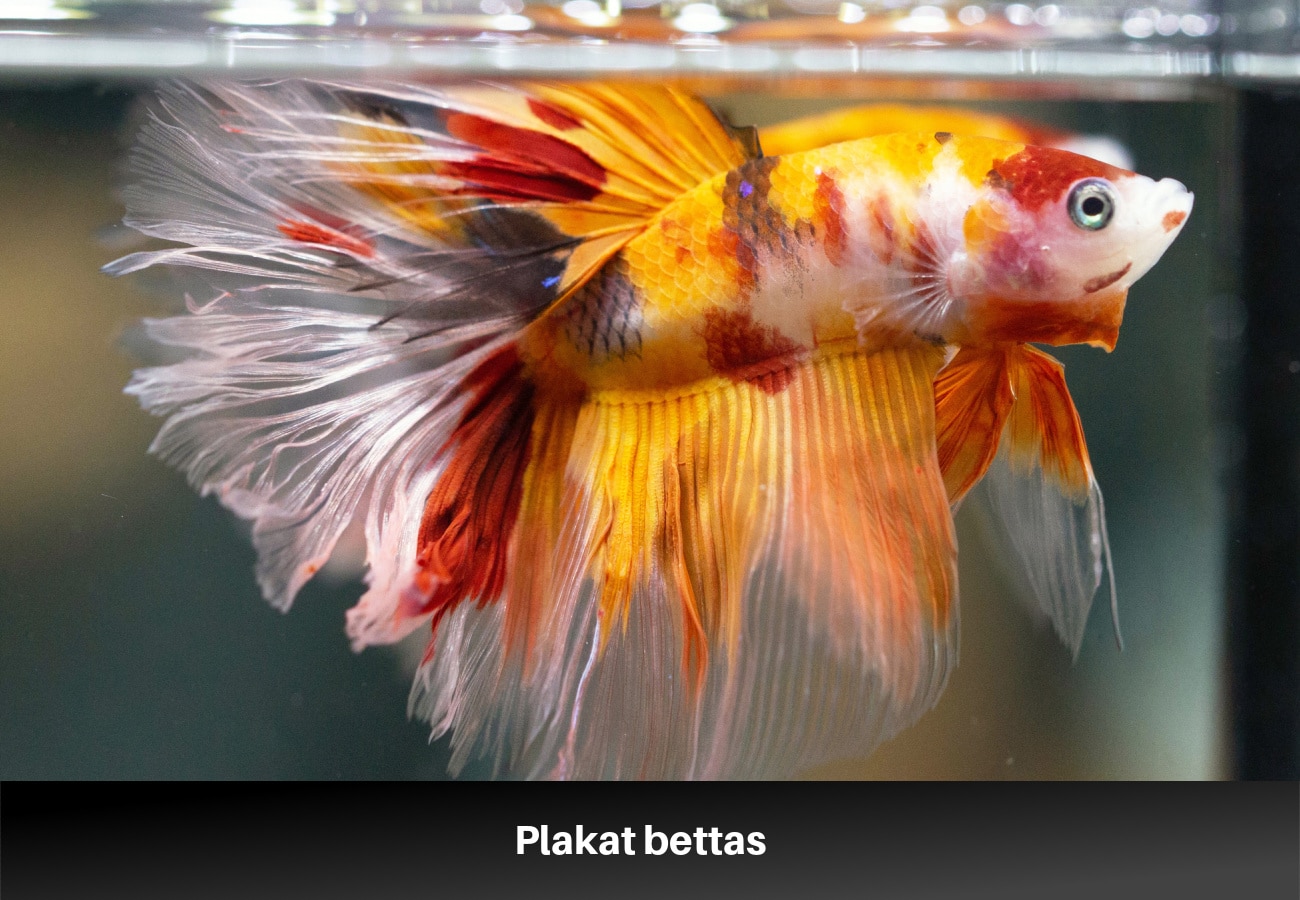
Plakat bettas tend to be the hardiest type of Betta splendens because of their short tails.
Most of the health conditions bettas have stem from their tails. Besides plakats, Betta splendens have long, flowy tails. They are delicate and easily injured. Tail injury often leads to bacterial infections like fin rot.
As all the tail types are the same species, they have the same general hardiness, otherwise.
The Easiest Type Of Betta Fish To Care For
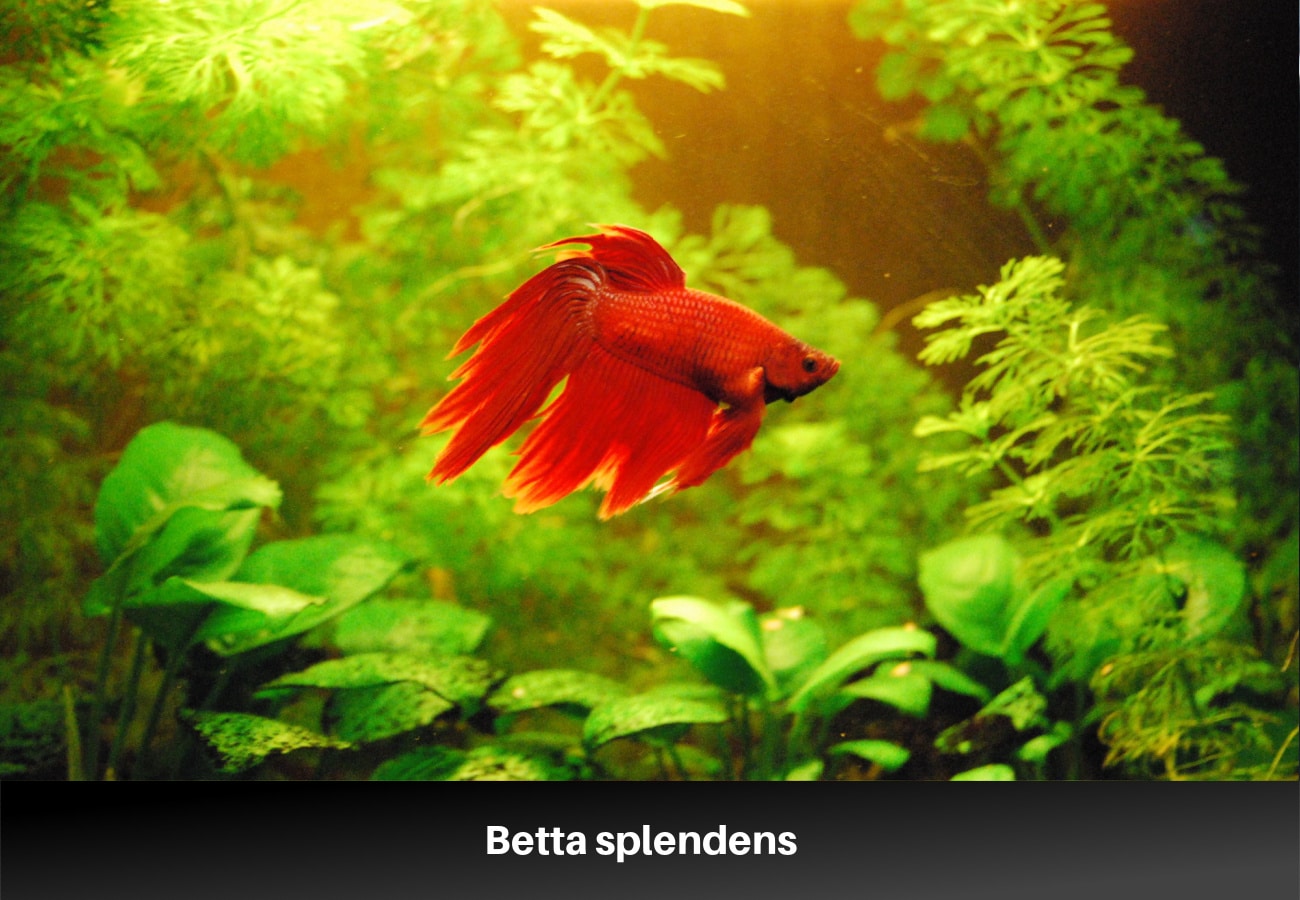
Betta splendens are the easiest species to care for. They are widely available in the aquarium trade, and we know much about them.
Betta splendens are hardy; they do well if hobbyists meet their basic requirements.
Other betta species are rare in the aquarium hobby. We know less about their history and needs, making them more challenging to care for.
The Most Aggressive Type Of Betta Fish
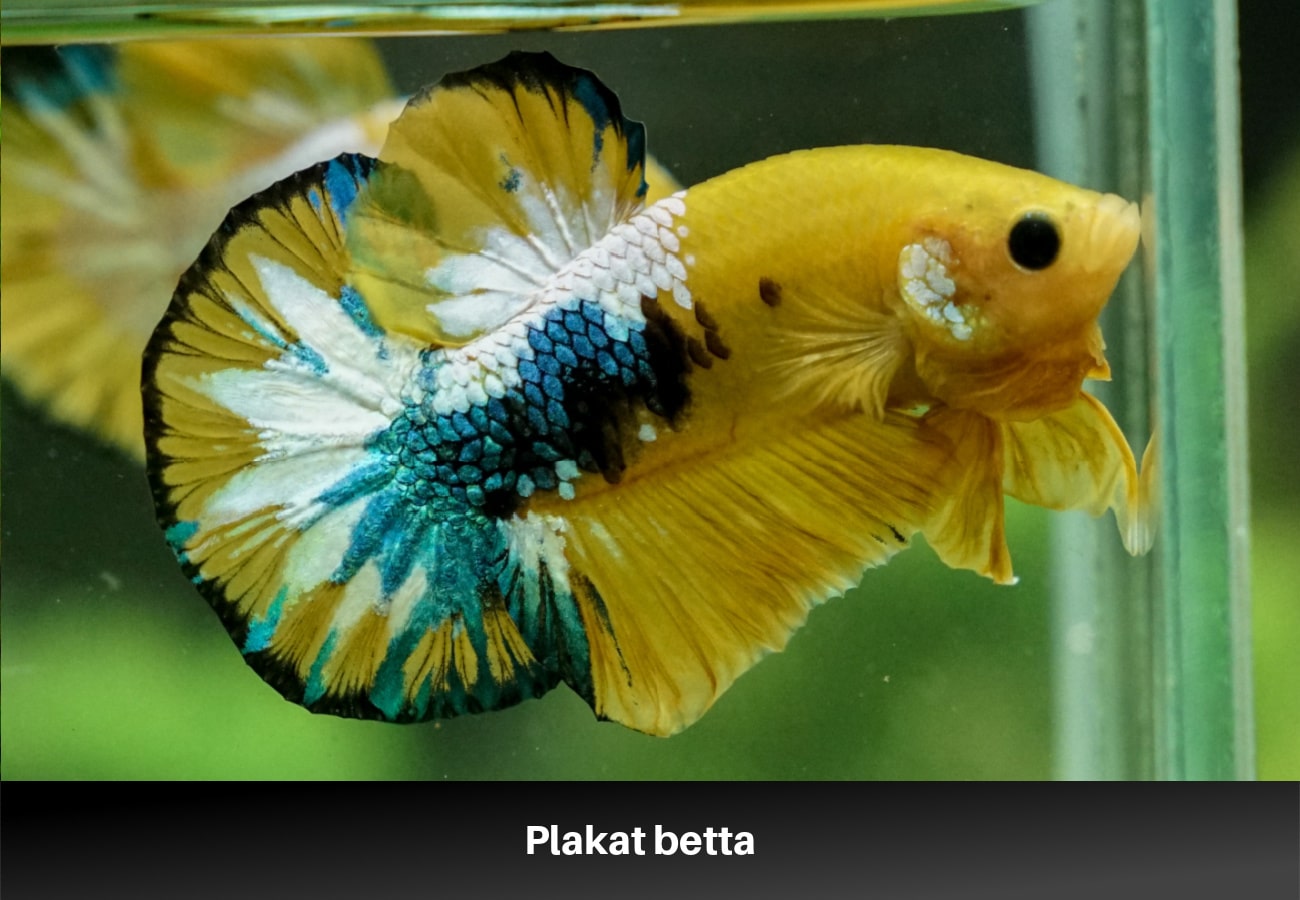
Plakat bettas are the most aggressive type of betta fish. Humans bred them specifically for their aggression.
Their short fins make for faster swimming, meaning they can attack more easily.
The Most Peaceful Type Of Betta Fish
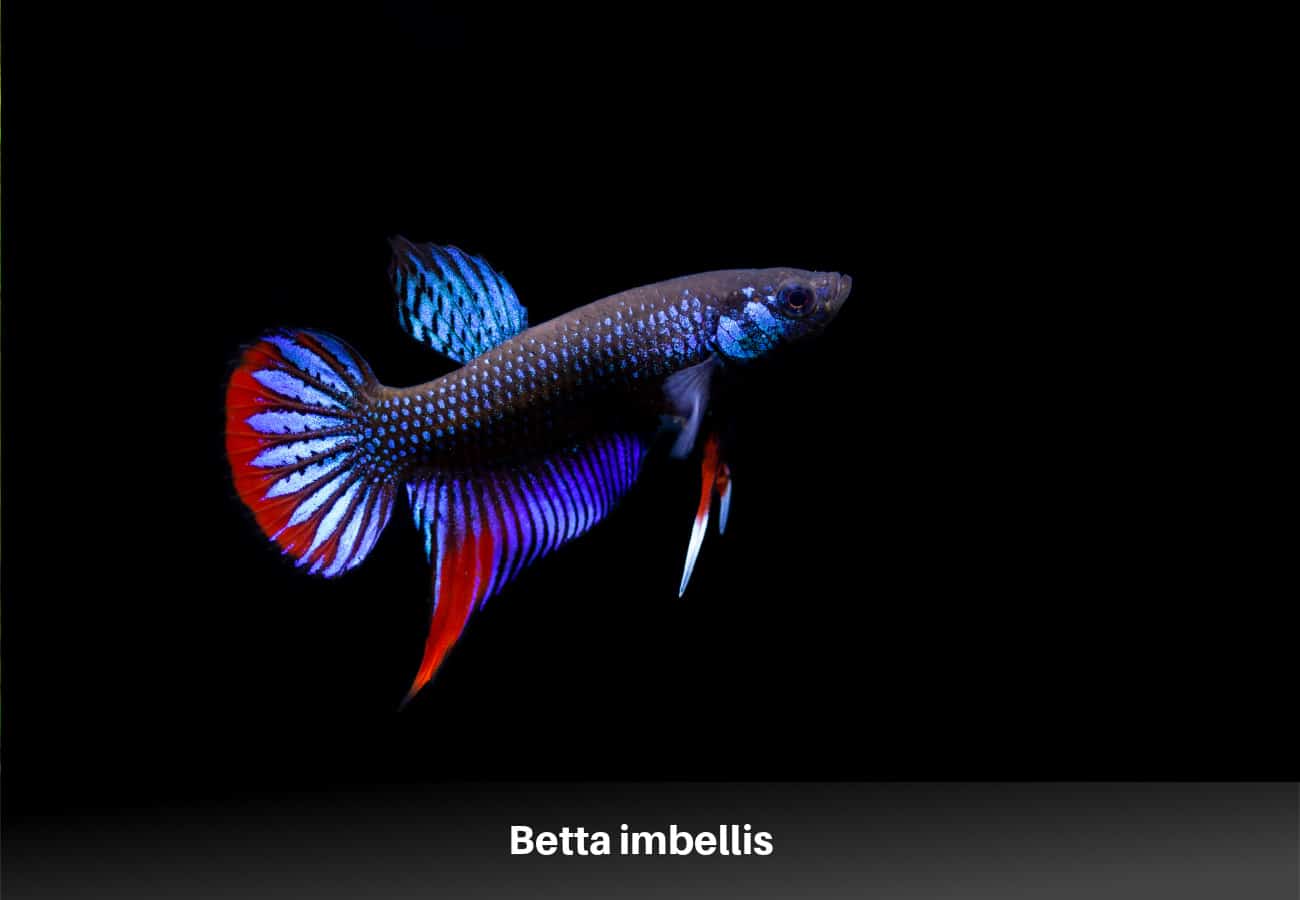
Betta imbellis are the most peaceful species of betta. They have earned the nickname “peaceful betta.”
They are also one of the smallest betta species, with males growing no larger than 2 in (5.1 cm).
As a wild type, they are less common in aquariums. They make great companions for community fish.
Some hobbyists have found that Betta imbellis can live in pairs in large enough tanks. These fish are shy and don’t seem to mind the company of other fish.
Betta imbellis are much duller than Betta splendens. They only display some color when they’re ready to mate.
The Most Expensive Types Of Betta Fish
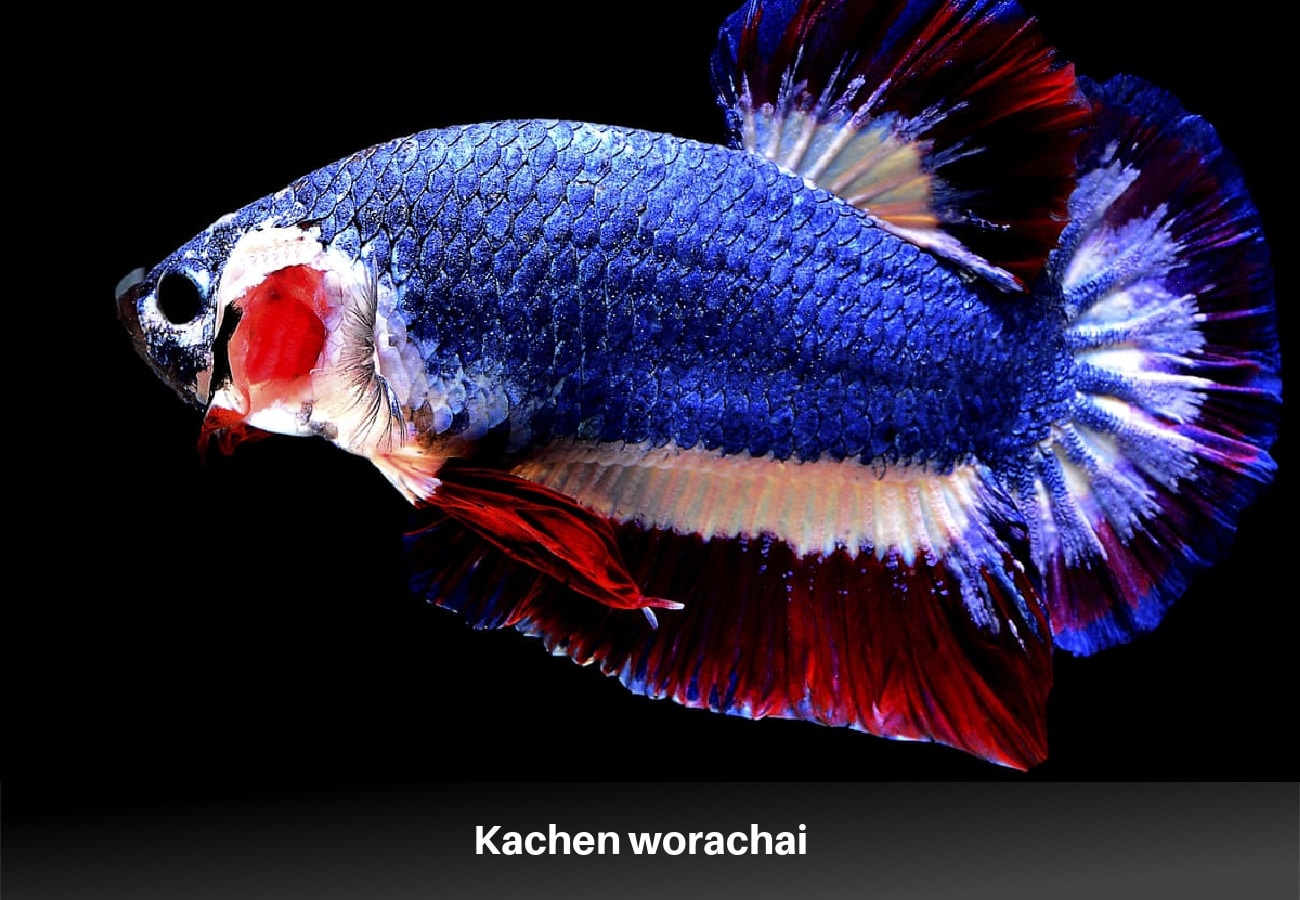
One of the most expensive types of bettas is the kachen worachai. The most expensive kachen worachai on record sold for $1,570.
They are a type of halfmoon plakat betta with dark blue bodies. Their bellies are white, and their fins are deep red.
How expensive a betta fish is usually depends on its color more than its fin shape. Albino, light yellow, and true purple bettas sell for a lot of money because their colors are rare.
Plakats, rosetail, feathertails, and dumbo bettas all tend to have heftier price tags.
Betta Splendens — Different Tail Types
Betta splendens are the kinds of bettas most often sold in stores. They come in many tail types and colors — there’s no shortage of unique bettas.
Keep in mind that females of all variations look quite different from males. Females are duller in color and have shorter, less flowing fins than males. Their more subdued appearances make them less popular amongst hobbyists.
Veiltail Betta
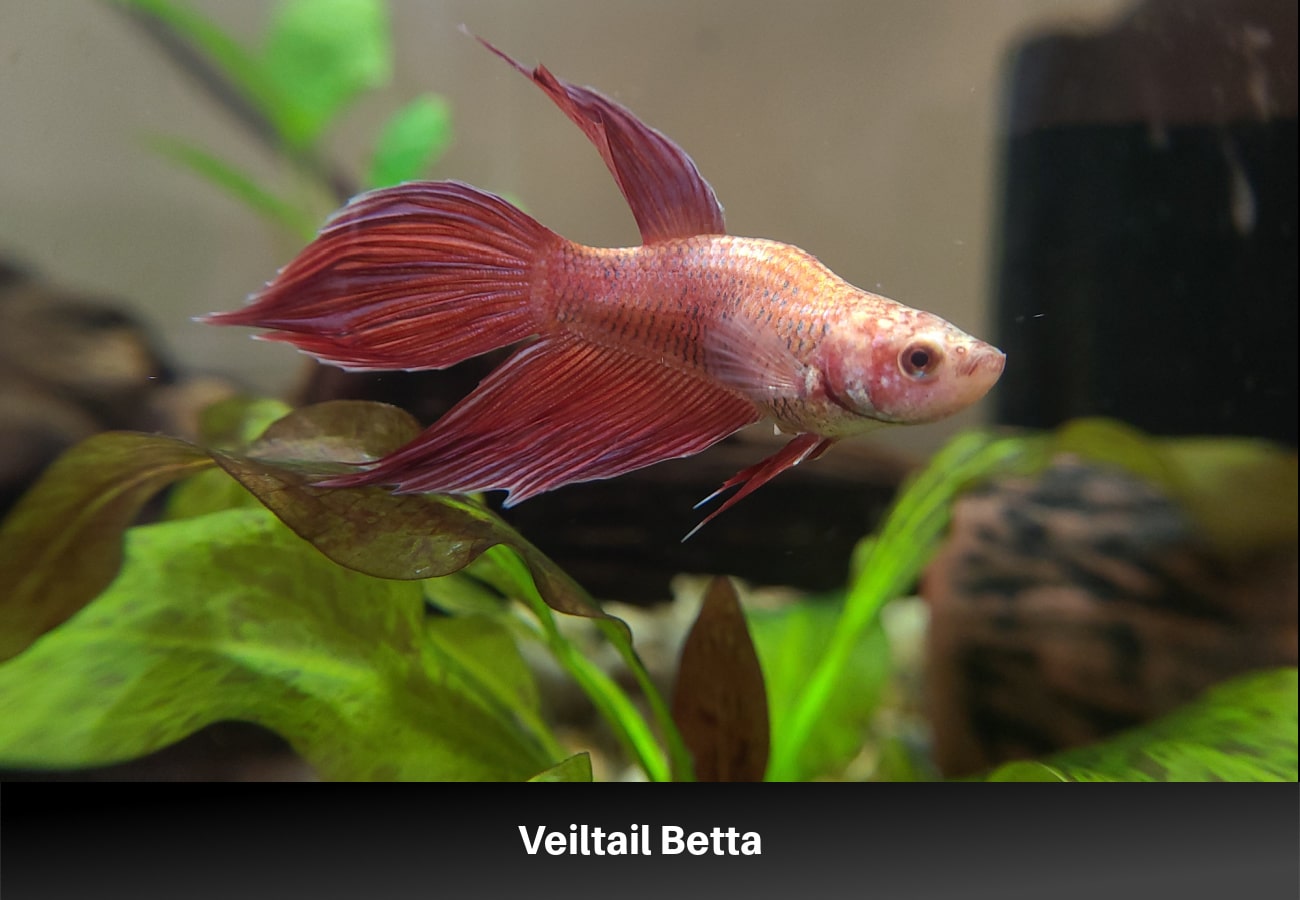
Veiltails are the most common type of betta available in pet stores. Every pet store selling bettas will surely have a wide selection of these fish.
Veiltails are so common because they have dominant genes. They are easy to breed, making them widely abundant.
Their tails, or caudal fins, are long and droop a bit at the end. They get their name because the shape and shiny color of the fins resemble a veil when the fish swims.
Unfortunately, many hobbyists don’t see veiltails as desirable anymore. Their colors are not as astounding as others, and their fins are not as large or fan-like.
Veiltails usually only sell for a few dollars.
They tend to be hardier than the other tail types. Veiltails haven’t gone through as much selective breeding.
Crowntail Betta
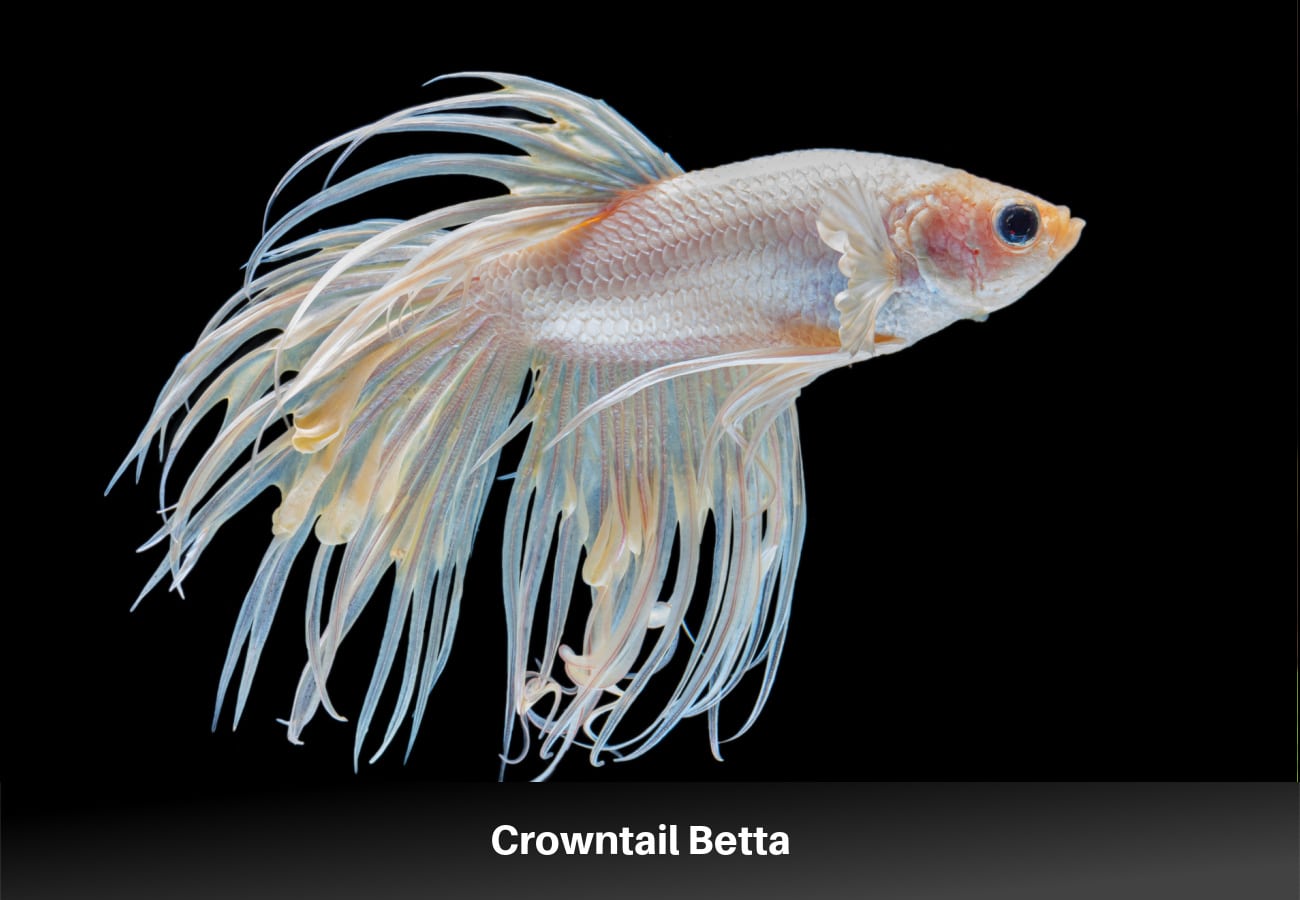
Crowntails are among the most popular betta types. They have a strikingly unique fin shape.
The fins appear frayed, creating thin strands that end in a sharp point. There is slight webbing between the fin threads, though they stop about halfway to the ends of the fins.
The fins may spread a full 180 degrees, though less is more common.
The webbing should not extend more than ⅔ of the way up the betta’s tail. A betta with a tail that extends this far is a combtail.
The crowntail variation is new; humans only bred them about 25 years ago.
Plakat Betta
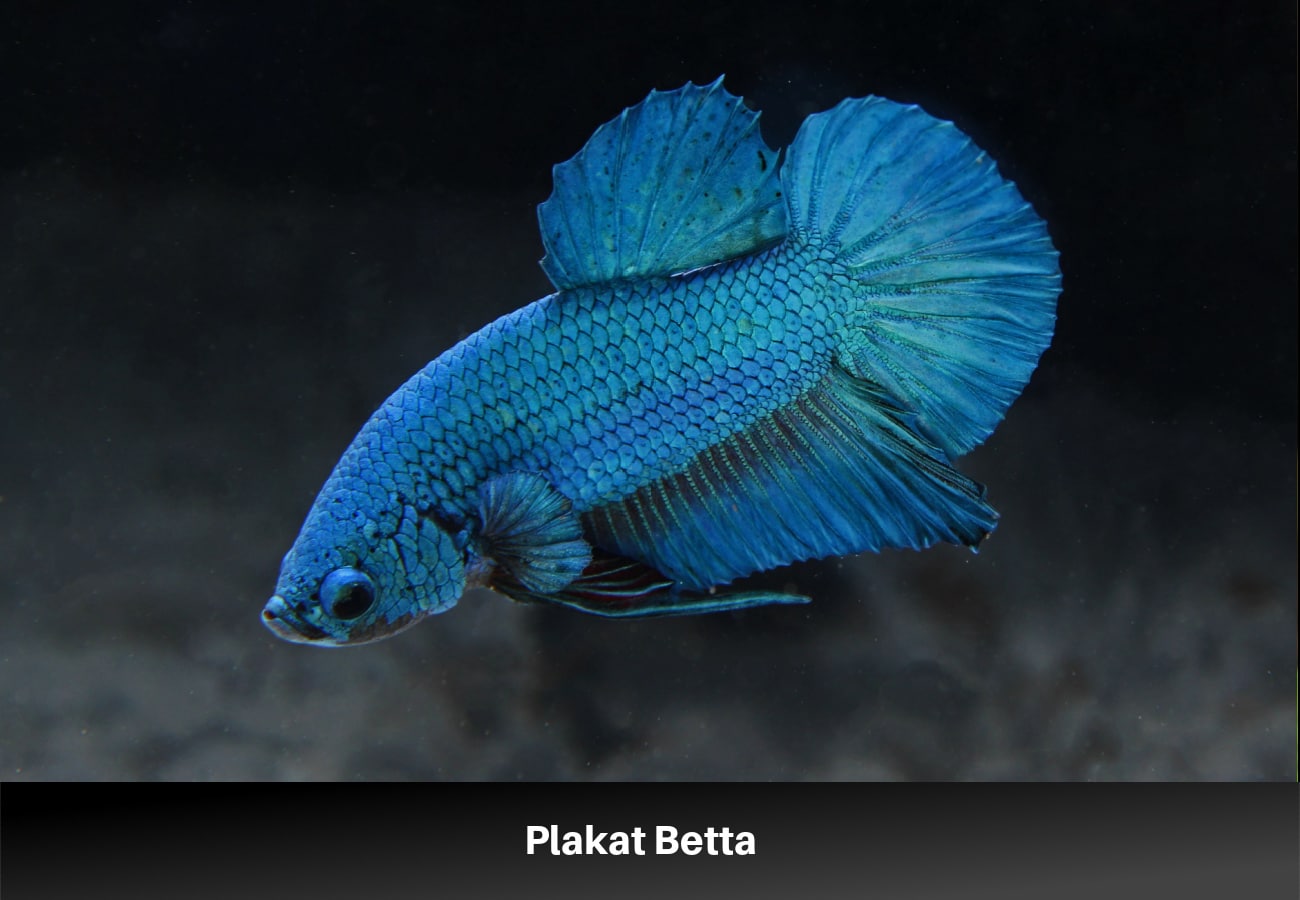
Plakats are popular for their uniquely short tails. Traditional plakats have slightly rounded tails, and their ventral fins are more extended. Their anal fins end in a sharp point.
Selective breeding has brought us halfmoon and crowntail plakats. The halfmoons’ tails are short but span 180 degrees like typical halfmoons. Similarly, crowntail plakats have thin, spiky rays with webbing like their larger counterparts.
Male plakats are often mistaken for females of other variations due to their short fins. Plakats — both male and female — are more colorful than typical female bettas.
These fish are most closely related to wild-type bettas. They are far more aggressive than wild bettas.
Halfmoon Betta
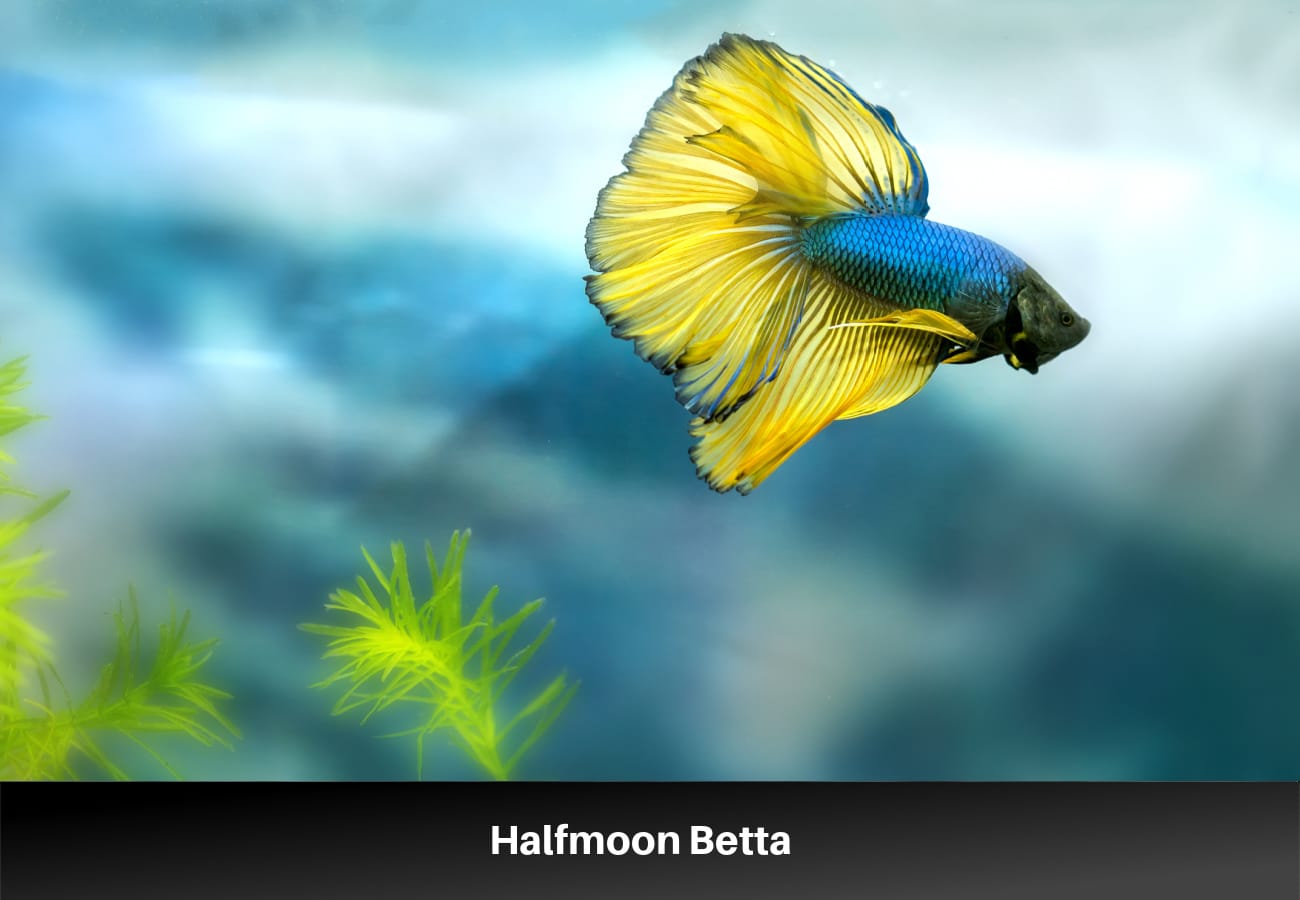
The halfmoon betta has a broad caudal fin that spans a full 180 degrees — it looks like a half-moon.
Their dorsal and anal fins are larger than that of most betta types.
While these fish are beautiful, their tails are more prone to tearing and fin rot than other types.
Halfmoon bettas tend to be one of the most aggressive kinds of bettas. Keep an eye on them when adding them to a community tank. Be prepared to move them to a separate tank if needed.
Double Tail Betta
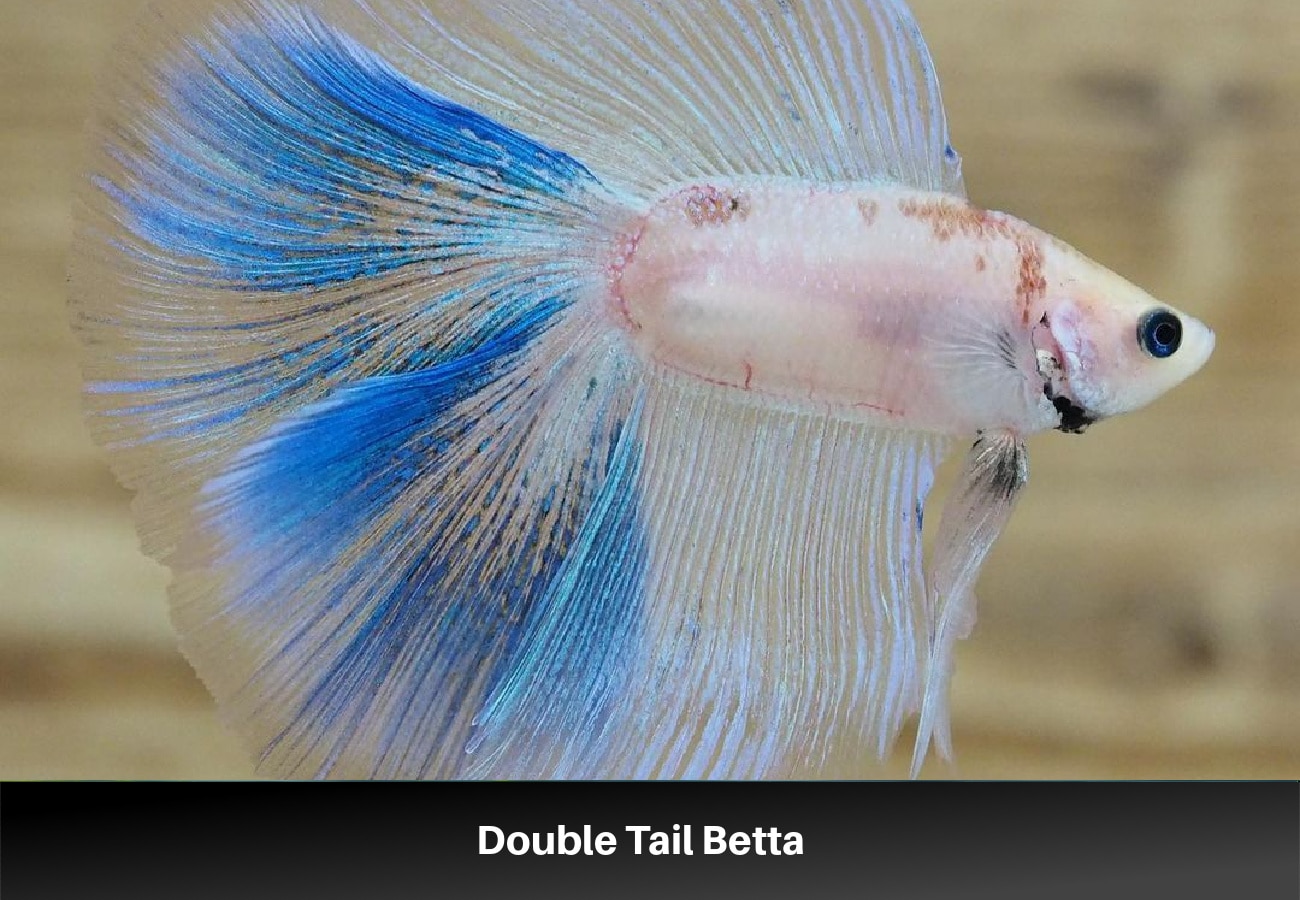
Double tails get their name because they have two tails, or caudal fins. Their tail does not simply split in half in the center; they genuinely have two separate fins.
The size of the two fins may be even or uneven and are smoothly round.
Double tail bettas typically have shorter bodies with larger dorsal and anal fins.
Elephant Ear/Dumbo Betta
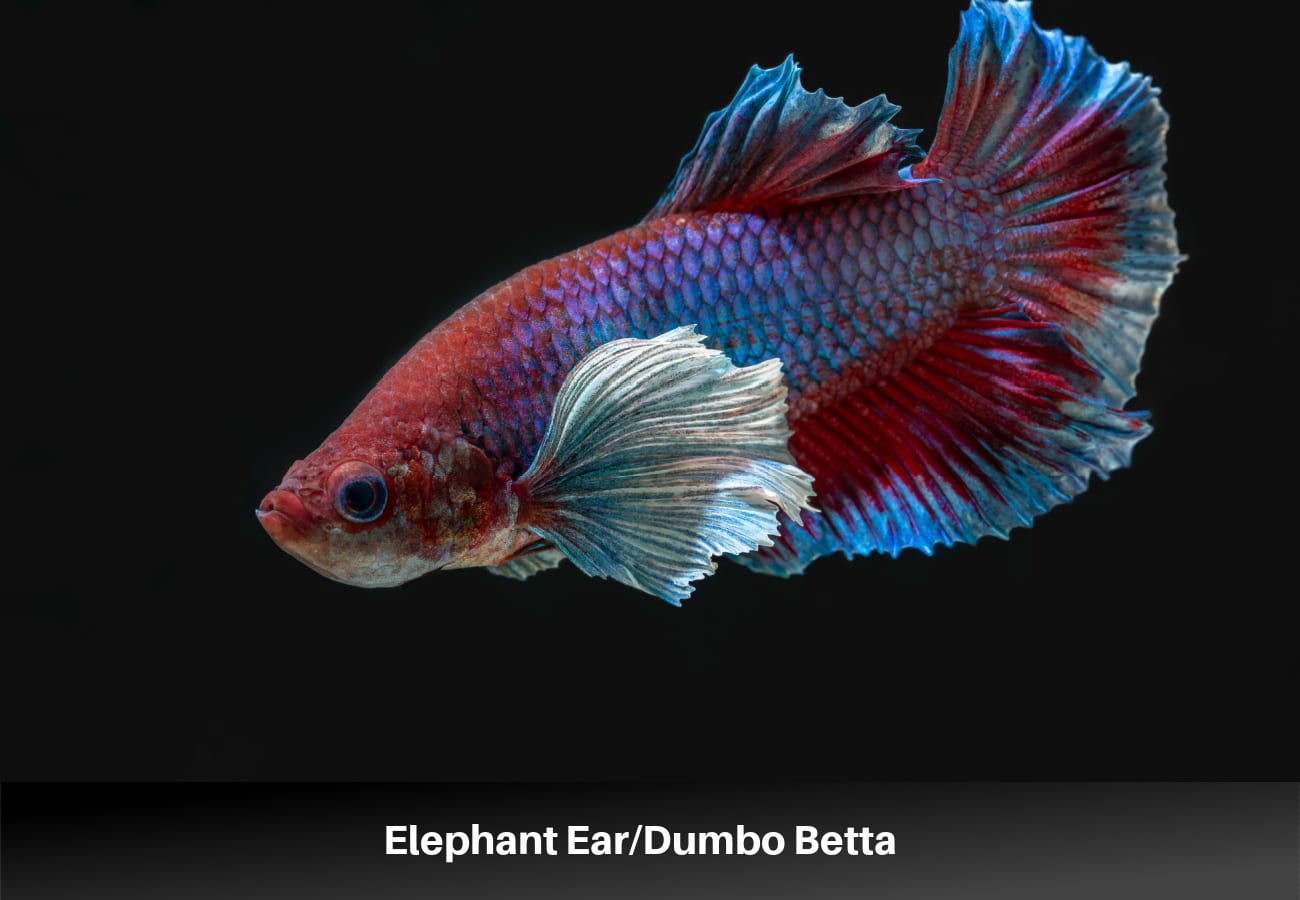
Elephant ears bettas sometimes go by the name “dumbo” betta. The pectoral fins are broad and flowy, making the fish look like they have the ears of an elephant.
These fish tend to be one of the more aggressive betta species. Their large pectoral fins sometimes scare the other fish in the tank.
Delta Tail Betta
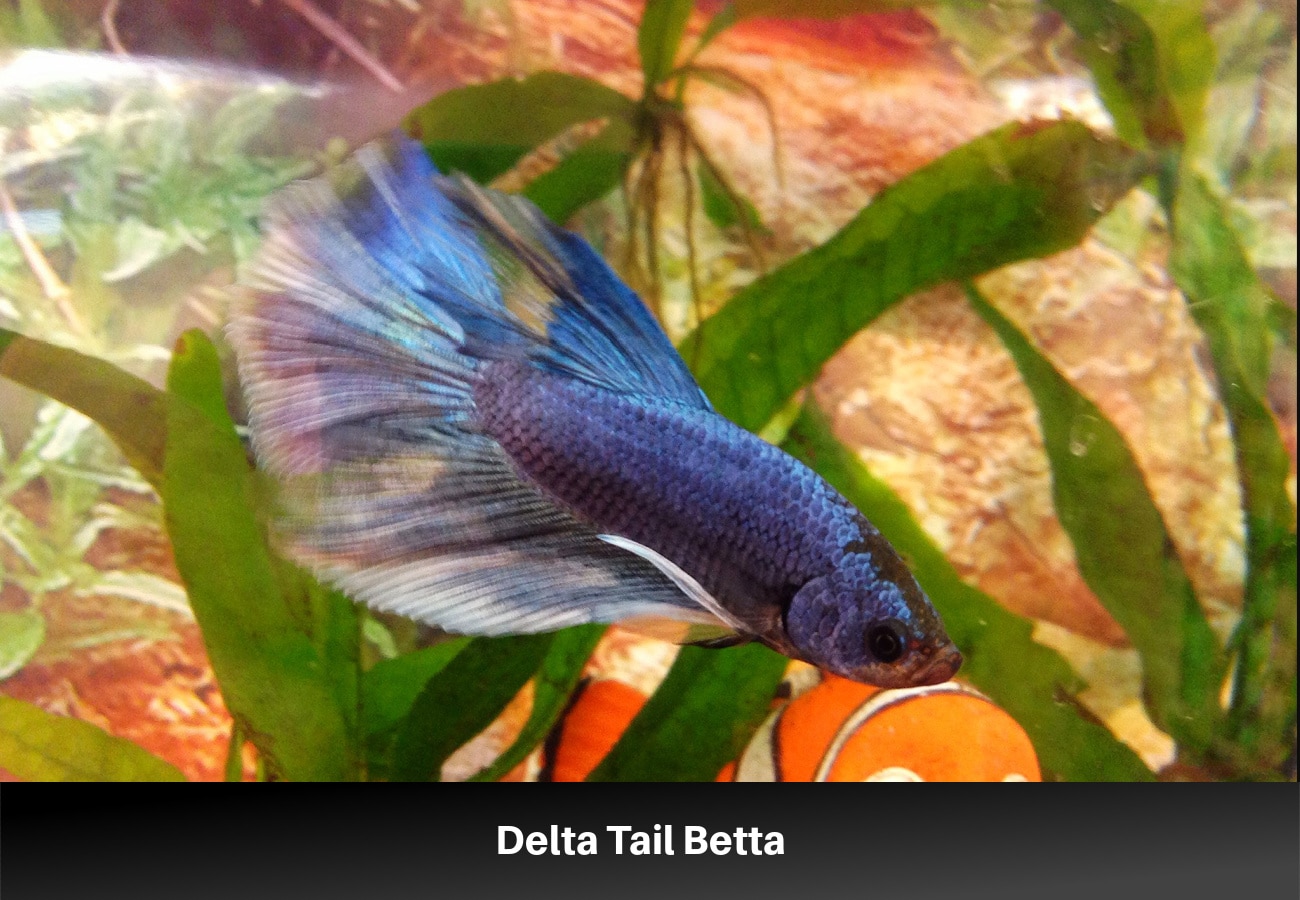
Deltas get their name because their tail fins resemble the Greek letter “delta” placed on its side. The letter delta is triangular, and the delta betta’s tail mimics this. It is pointed close to the body and spans out further from the body.
The difference between these bettas and others is that their tails are symmetrical. They have as much tail on the upper half of their body as they do the lower half.
Rosetail Betta
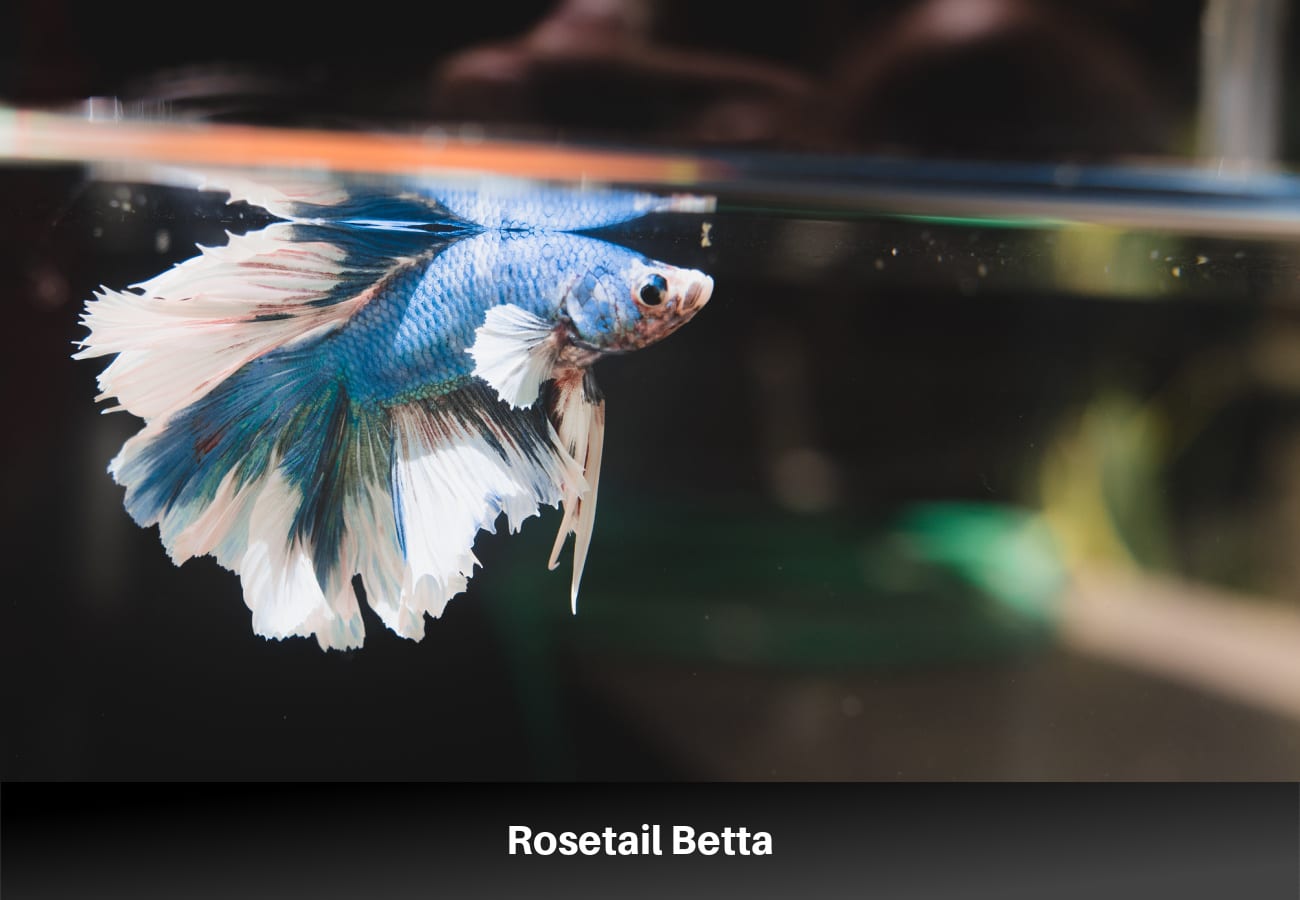
Rosetail bettas’ tails span 180 degrees like the halfmoons. Their tails are more ruffled than a halfmoon’s.
The rose-petal-like appearance of their tails stems from the branching of their rays.
The downside for these fish is that the tail tends to be quite heavy and may make it difficult for the fish to swim.
Other Tail Types
The other tail types are less common than those listed above. They are harder to find and are often more expensive. These bettas are a good option for hobbyists that want a fish that is a bit more unique.
- Combtail Betta: The tail fin fans out, usually less than 180 degrees. There are distinct rays, like crowntails, with webbing between each ray. Their tail shape is less drastic than a crowntail’s, giving them a comb-like appearance.
- Roundtail Betta: These fish have similar body shapes to deltas. Their tail is rounder, and they lack the straight edge close to the body that deltas have.
- Spadetail Betta: These fish have short, pointed tails resembling a spade. The tails are typically symmetrical.
- Over Halfmoon Betta: These fish look the same as a typical halfmoon. Their tail spans more than 180 degrees and are larger than a halfmoon’s.
- Half-Sun Betta: These fish result from breeding halfmoon and crowntail betta fish. Their tails span a full 180 degrees like the halfmoons’. Like the crowntails, their rays protrude past their tail’s webbing. The presence of their rays is very subdued and less noticeable than crowntails.
- Super Delta Betta: These fish look much like regular deltas, though the spread of their fins is wider. Their fins almost span 180 degrees, though not entirely. Typically, they span about 120 to 160 degrees.
- Feathertail Betta: These bettas resemble rosetails. Their fins have “extreme” ruffling with more branching.
Can Betta Fish Live With Other Types Of Fish?
Bettas can usually live with other peaceful community fish.
Some of the best tank mates for bettas include:
- Zebra danios
- Harlequin rasboras
- Corydoras
- Platies
Some Betta splendens are too aggressive and can never adapt to life with other fish. Hobbyists should watch how their betta interacts with its tank mates. Be prepared to move them to another tank if they become too aggressive.
Bettas each have their own personalities. Some will be more tolerant of tank mates than others.
Betta splendens see bold colors and long fins as a threat. Avoid housing them with fish like guppies and swordtails. Some more peaceful betta species, like Betta imbellis, may do okay with these fish.
Avoid overly large or aggressive fish like cichlids and goldfish who will eat bettas. Fin nippers, like tetras and barbs, are usually best avoided.
Can You Breed Different Types Of Betta Fish?
Different species of bettas will breed together. The interbreeding of species isn’t common since wild types are rare in the aquarium industry. Hobbyists can breed other species, though most choose not to.
Interbreeding is becoming a problem for the wild populations. Domestic bettas enter wild habitats after their owners release them. They interbreed with the wild species and are diluting their genetics.
FAQs
What Type Of Water Do Betta Fish Need?
Bettas are freshwater fish that need warm, slightly acidic, slow-moving water.
They are native to the rice paddies and streams of Southeastern Asia. Temperatures in this region remain around 75°F (24°C) for most of the year. The water lacks flow and oxygen, and bettas have learned to adapt.
What Type Of Fish Food Do Betta Fish Eat?
Bettas are obligate carnivores that eat meaty, protein-rich foods. In the wild, they eat various insects, insect larvae, crustaceans, and zooplankton.
In captivity, their staple diets often comprise pellets or flake foods. Make sure to choose foods designed specifically for bettas. Check the nutrition label and ensure some kind of meat is the first ingredient.
Owners can feed them a variety of live, frozen (thawed), or freeze-dried foods. Some of their favorite snacks include bloodworms, daphnia, and brine shrimp.
What Type Of Plants Do Betta Fish Like?
Bettas prefer thick plants that are good for hiding, like wisteria and anacharis.
They love broad-leaf plants that they can rest on. Anubias and Cryptocoryne species are good options.
They enjoy floating plants like Brazilian pennywort and duckweed.
What Type Of Betta Fish Lives The Longest?
Veiltail bettas tend to live the longest. They haven’t gone through as much selective breeding.
Females tend to live slightly longer than males, too.
The average lifespan of betta fish is two to five years old. They may live slightly longer than this if they receive excellent care.
